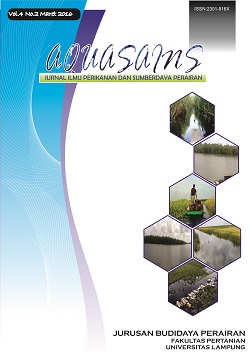Analysis of Water Quality for Tourism Suitability at Indonesia’s Front Island: Ganting Beach, Simeuleu Island, Nanggroe Aceh Darussalam
Abstract
Indonesia is an archipelago country with potential marine and coastal. Simeulue Island, NAD is one of the leading island in west of the Republic of Indonesia and located in Hindia Ocean. Simeulue have potential marine waters such as fish, lobster, crab and sea cucumber as well as ecosystems such as coral reefs and mangroves. Simeulue is an area that affected by the tsunami or Smong (in local term means running) at eleven years ago on 26 December 2004. A big change that happen is the accretion on most coasts such as in the area around the northwest to the northeast. This accretion marked by the widening of the coast towards the sea and the lifting of the corals to the surface because of
the movement of tectonic plate subduction Sunda arc (Natawidjaja, 2007). This study aims to determine the condition of the water quality and the potential suitability of a marine tourism in this region to foreign countries. Location of study at Ganting Beach, Village of Kuala Makmur, Simeulue regency, Simeulue Island. The research was conducted in August 2015. The number of sampling station is 12 points with purposive sampling method. Observation of water quality parameters are pH, temperature,salinity, turbidity, dissolved oxygen, brightness, BOD5, odors, oil and debris. These parameters are then mapped using software ODV, analyzed and compared with the sea water quality standard for marine tourism as well as the characteristics of the coast to the suitability index of recreational area. Water quality parameters showed pH values ranged from 10.05 to 10.25; temperature from 29.80 to 31.90 (° C); salinity from 27.60 to 32.70 (ppt); turbidity from 0.00 to 3.50 (NTU); dissolved oxygen from 7.46 to 8.77 (mg / L); BOD5 from 0.897 to 1.076 (mg/ L); brightness 8.50 to 15.40 (m); no smell; no oil layer; and no debris. The results showed that the water quality P. Ganting is very suitable for recreational activities (index 77, category S1) and it is suitable for swimming and also for boating tourism activities, banana boats and jet skis (index 16, category S2).

.png)










